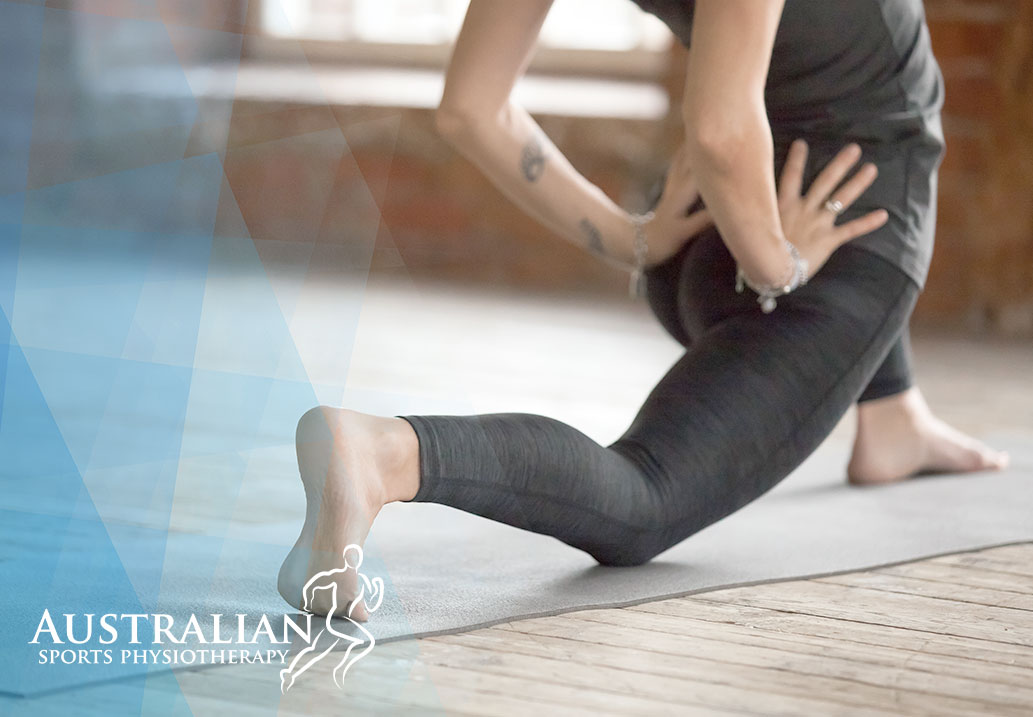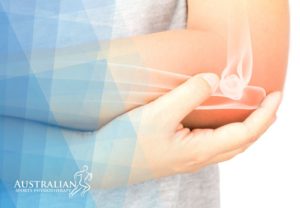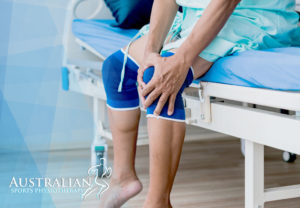Have you been experiencing hip or groin pain?
Hip and groin pain is a relatively common problem that many individuals can face regardless of their level of fitness. Hip and groin pain can be caused by many conditions – developmental conditions, a strained muscle, an irritated tendon, osteoarthritis, impingement between the ball and socket of your hip, a hernia, or it could even be coming from your low back.
An in-depth clinical examination performed by one of our experienced physiotherapists will help determine the exact cause of your pain and create an effective and individualised treatment plan for you.
Physiotherapy-led rehabilitation aims to improve your hip stability, neuromuscular control, strength, range of motion, and restore normal movement patterns so you can get back to enjoying the things you love.
Common causes of hip and groin pain
There are several reasons your hip and/or groin could be causing you pain.
Internal pain: Some causes of hip and groin pain come from within the joint itself such as the following:
- Femoroacetabular Syndrome (FAI): caused by inappropriate contact between the femur (the ball) and the acetabulum (the socket). It is usually worse with specific movements and has been linked with early onset osteoarthritis.
- Osteoarthritis (OA): OA is pain, stiffness, and sometimes loss of function of a joint. It is the most common joint problem world-wide and can be improved with physiotherapy to restore the movement, strength, and function of the hip.
- Dysplasia: Although usually detected and treated earlier in life, hip dysplasia can become problematic later on. It results when the acetabulum (the socket) is not deep enough for the femoral head (the ball), and this can result in instability and pain in the hip and groin.
External: Some causes of hip and groin pain come from outside and around the hip joint such as the following:
- Muscle or Tendon Pathology: Muscle and tendon injuries are some of the most common issues in sporting people. Your quadriceps, hamstrings, or adductors could be involved. This type of injury can either happen suddenly, overtime, or go away and come back repeatedly.
- Stress Fracture: Think of a stress fracture like a bone sprain. A stress fracture can range from a minor irritation to a complete break. These are quite common in women, and athletes.
- Greater Trochanteric Pain Syndrome (Pain on the Outside of the Hip): This is commonly caused by irritated tendons around the bony part of the outside of the hip, or a small fluid filled sack called a bursa that gets irritated and inflamed. Sometimes both can occur at the same time, resulting in a very painful hip on the outside.
Additionally, other conditions can present like hip pain but is actually something else. Your low back, nerves, and even some medical conditions can mimic hip and groin pain.
- Referral from your low back: if you find you get back pain at or around the same time as your hip pain, it may be that the low back is causing your symptoms.
- Nerve entrapment: There are several nerves that travel around structures in the hips and pelvis. Sometimes they can get “stuck” and this can also result in pain around the hip and groin area. Nerve entrapment can also occur with low back pain.
- Hernia: If you notice a lump or bulge near the bikini area, it is possible that it could be a hernia. These occur when an organ (often the intestine) slips through a tear in a muscle
- Other Medical Conditions: urinary and genital conditions, appendicitis, and tumours can also cause hip and groin pain. Your physiotherapist will take a detailed history and perform a thorough assessment to rule out these conditions as a cause of your pain before proceeding with treatment.
Symptoms of hip and groin injury
Symptoms may include pain or tenderness around the groin and/or hip, a snapping on the front or on the side of the hip, feeling like your hip is stuck, feeling like your hip is ‘giving way’, locking or catching of the hip. These symptoms may feel worse with certain activities such as getting out of a car, kicking a ball, putting on your shoes and socks or running.
Other symptoms may include morning stiffness, a lower back ache on one or both sides, increased pain after running, or pain with deep breathing.
Physiotherapy assessment for hip and groin pain
In addition to assessing for signs of superficial injury such as bruising and swelling over the affected region, our skilled physiotherapists will perform a number of orthopaedic, non-invasive tests to determine the precise location and cause of your symptoms.
Generally, you can expect your physiotherapist to palpate (or feel) structures at and around the hip, look at your movement and functional activities (squatting, bending forward, etc.), and assess the strength of the muscles around the hip and groin.
Further imaging tests, such as an X-ray, an MRI, or an ultrasound may be ordered by the physiotherapist as part of the initial assessment, but this depends on each individual person.
Does physiotherapy help hip and groin pain?
There are many reasons you could be having hip and/or groin pain, and a physiotherapist is skilled and qualified to treat many of these. If there is something contributing to your hip and groin pain that we are not able to help with, we will always refer you to the right person, so you waste no time in getting back to doing what you love.
A goal of physiotherapy is to keep you as active as possible, even around injury or pain. Your physiotherapist will work with you to determine your goals of treatment and discuss all of your treatment options with you.
Sometimes rest and other assistive devices, such as crutches, are needed to help you manage your pain. We will always provide you with a detailed treatment plan and answer any questions you have surrounding your treatment, so you have peace of mind about your recovery.
A physiotherapy program tailored specifically for your condition can commence as soon as an injury has occurred, or if you have been having pain for years. Treatment is usually focused on restoring normal range of motion, muscle strength, and helping you get back to activities you enjoy.
While physiotherapy can help with many causes of hip and groin pain, sometimes surgery is necessary if symptoms do not improve. Often, physiotherapy is beneficial prior to surgery to ensure you are strong and healthy for a smoother recovery. Your physiotherapist will let you know as soon as possible if they feel referral to an orthopaedic surgeon is necessary.
How do you get rid of groin and hip pain?
Acute soft tissue injuries to the hip and groin (strains, sprains) respond extremely well to physiotherapy treatment in most cases. Injuries that are caused by a direct impact or traumatic event generally heal faster compared to those that occur from overuse.
In terms of recovery from a hip or groin injury, most patients can expect to return to their previous level of activity. In the vast majority of cases, these injuries resolve without any long term problems.
There is however a risk that chronic symptoms may develop after an acute injury if physiotherapy programs are not followed – this is because over time, weak muscles around the hip and groin can lead to instability, poor movement, limited activity, and further pain.
Final thoughts
Physiotherapy is a great way to help with hip and groin pain. Whether you have had pain for years, or have sustained an acute injury, restoring normal movement will help speed up the overall recovery process, so you can get back to doing what you love, sooner!
If you are experiencing any of these symptoms, it may be time for physiotherapy so book an appointment at the Australian Hip and Groin Clinic today!









